What do you think of when you hear the words “slave trade”? You probably think of the Atlantic slave trade. While this is one of the most well known, there were (and still are) numerous other trades as well. Today we’re going to take a look at all of the different trades throughout history, with a focus on the Atlantic trade. These are 25 shocking facts about slave trade.

One of the first mentions of slavery was in the Mesopotamian Code of Hammurabi (c. 1860 BC). It's worth noting that besides not having a written language, slavery wasn't too popular with hunter-gatherers because it required social stratification.
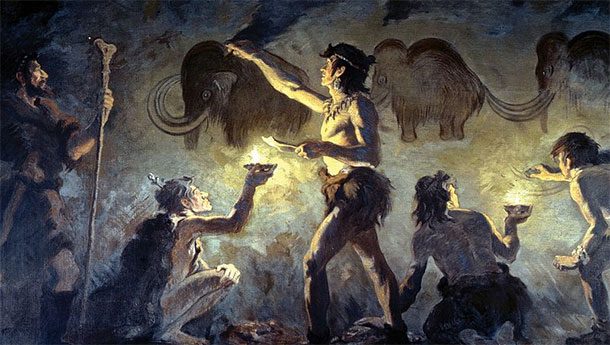 Source: history.com
Source: history.com Since the beginning of civilization (post-hunter-gatherers), slavery has played a huge role in society from the building of the pyramids in Egypt to indentured servitude in England. In fact, at the turn of the 19th century, an estimated 3/4 of the world was trapped in bondage against their will (some form of slavery or serfdom).
 Source: britannica.com
Source: britannica.com The first large scale slave trade was the Arab slave trade. It started in the 7th century and primarily involved slaves being taken from western Africa to the Arabian Peninsula. Some historians have cited the Arab slave trade as possibly being the initial source of prejudice against darker skinned, sub-Saharan Africans that has unfortunately continued into the 21st century.
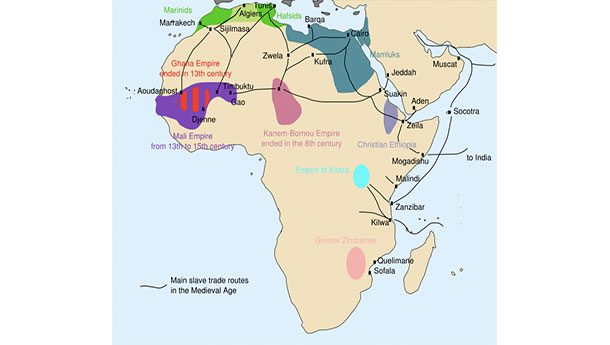 Source: slate.com
Source: slate.com When most people consider the phrase "slave trade," they are thinking of the Atlantic slave trade. This slave trade started during the 15th century and continued until the 19th century.
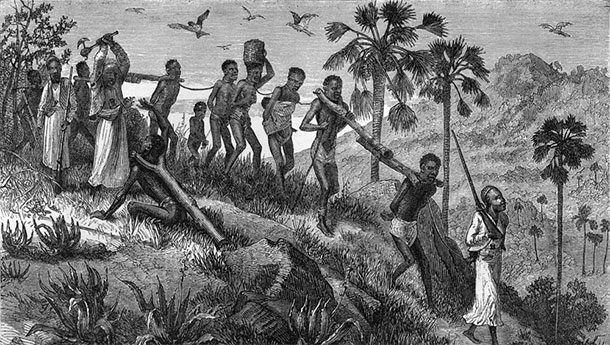 Source: history.com
Source: history.com As with the Arab slave trade, the source of slaves was once again sub-Saharan Africa. The Europeans essentially tapped into an already developed slave trade and exploited it for their own purposes.
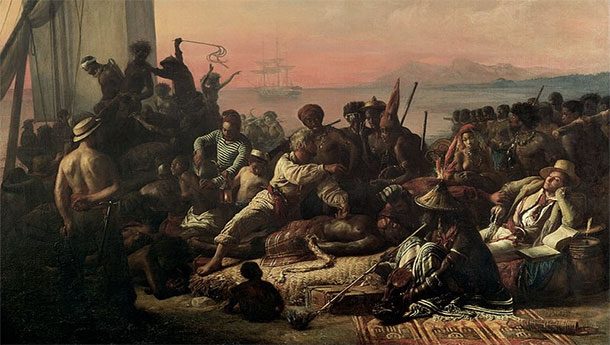 Source: bbc.com
Source: bbc.com The Portuguese were the first to enter the Atlantic slave trade in the 16th century. For the next 4 centuries, they would remain the primary actors. In fact, by the time it was abolished in the 19th century, nearly half of all slaves traded in the Atlantic slave trade had been shipped to Portuguese colonies like Brazil.
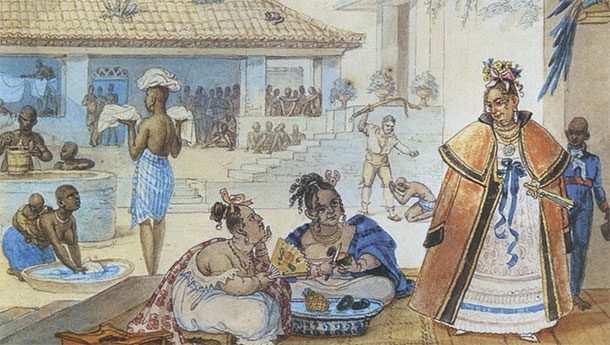 Source: nationalgeographic.org
Source: nationalgeographic.org Although most people think of the slave trade as being British ships taking slaves from West Africa to the United States, this only accounted for a little over 6% of all slaves. The vast majority of slaves (roughly 60%) were sent to Spanish and Portuguese South America.
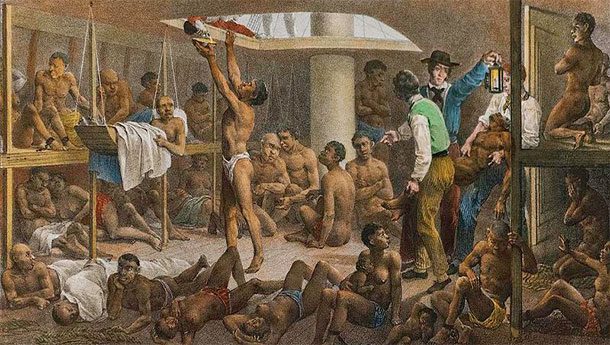 Source: ocf.berkeley.edu
Source: ocf.berkeley.edu Most of the remaining slaves (about 30%) were taken to the Caribbean by the British, French, and Dutch Empires.
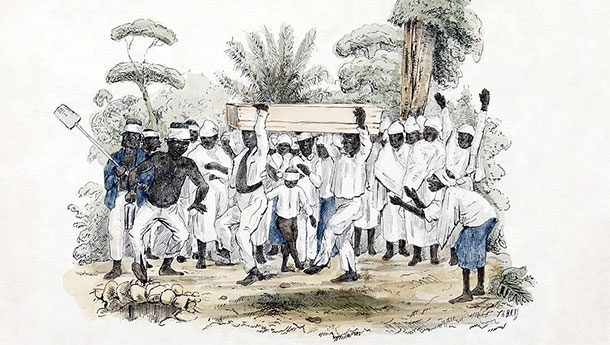 Source: history.com
Source: history.com This trade wasn't just back and forth though. It was something called Triangle Trade. As you could guess, triangular trade is any trade that involves three separate regions. In this instance, the slaves were taken from West Africa and exchanged for cash crops in the Caribbean; the cash crops were exchanged for manufactured goods in New England; and then the manufactured goods were once again exchanged for slaves in West Africa.
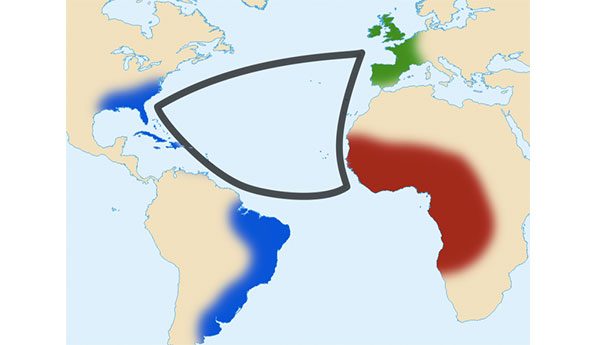 Source: britannica.com
Source: britannica.com Although the British North American colonies were not a major destination region for slaves (apart from the plantations of the south), the colonies benefited massively from selling their manufactured goods to slave traders.
 Source: history.com
Source: history.com Historians estimate that approximately 12 million African slaves entered the Atlantic trade between the 16th and 19th centuries. About 1.5 million died on the ships during transport, and 10.5 million were sold into slavery, mostly in the Caribbean. Another 6 million were sold to Asian slave traders, and yet another 8 million were destined for slave markets on the continent of Africa itself.
 Source: newsroom.ucla.edu
Source: newsroom.ucla.edu About 4 million more slaves died during forced marches to the coasts of Africa. Since Europeans typically were afraid to venture too far inland (due to disease), slaves were brought to the coasts to be sold by slave traders or opposing tribes.
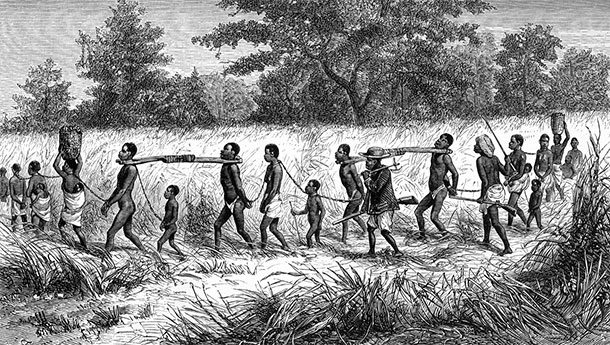 Source: nationalgeographic.com
Source: nationalgeographic.com With the arrival of European slave ships, criminals and prisoners of war were typically sold to the Europeans for money rather than being punished as they used to be.
 Source: theguardian.com
Source: theguardian.com Once at the coast, slaves were held in large forts called "factories." Out of the 20 million slaves who passed through the factory doors, historians estimate that roughly 4% died there (820,000 people).
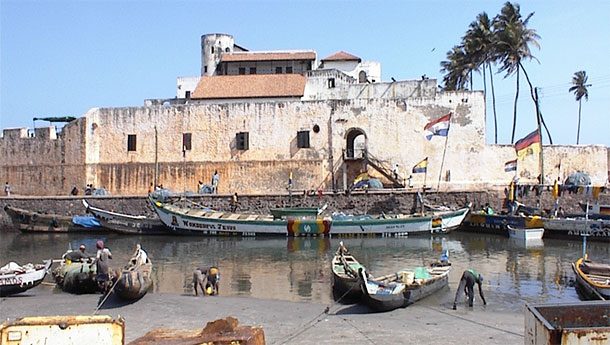 Source: britannica.com
Source: britannica.com Slave ship captains packed anywhere between 350 to 600 people onto their boats. The quarters were so cramped that the victims could barely move on the 2 month voyage across the Atlantic. Many died of disease because they slept in their urine and feces. Others committed suicide by escaping and jumping overboard. Even sailors didn't like working on the slave ships, and many died of disease. This was good for profits, however, as the ship captains had fewer people to pay.
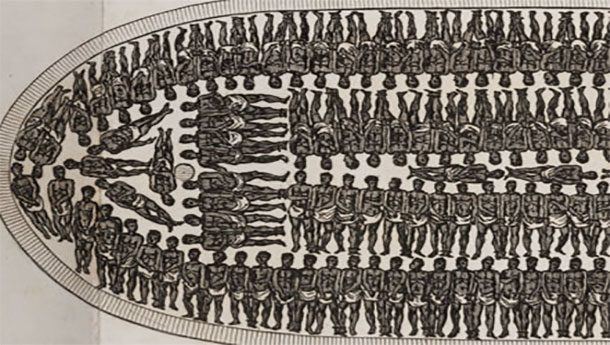 Source: npr.org
Source: npr.org Upon arrival in the Americas (usually the Caribbean), slaves were held at "seasoning camps." Dysentery was the leading cause of death here, and nearly 5 million slaves died in these camps.
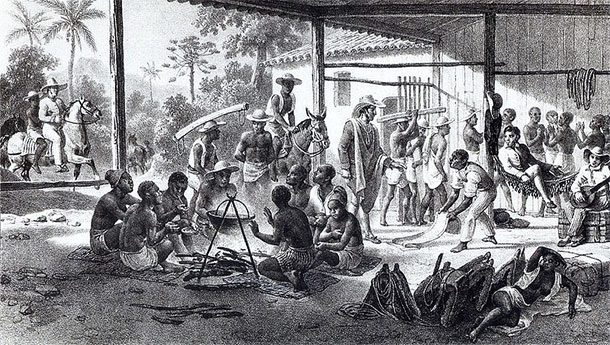 Source: bbc.com
Source: bbc.com Sugar plantations were the reason for about 84% of slaves being brought to the New World. The vast majority would end up in Brazil.
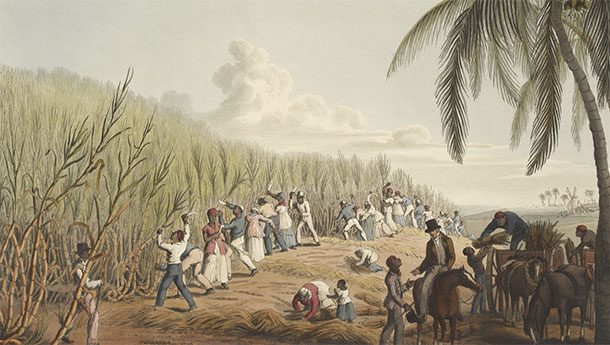 Source: history.com
Source: history.com Britain's Triangle Trade between its colonies, however, was the most profitable of the Atlantic slave trades. This led to Britain becoming a massive consumer of sugar. It is estimate that nearly 1 out of every 20 pounds in circulation during the start of the Industrial Revolution was derived from the slave trade.
 Source: britannica.com
Source: britannica.com So why were Europeans buying African slaves and not vice versa? To make a long story short, it came down to one thing...technology. Although it would have been cheaper to enslave other Europeans, advances in ship building technology made it possible to enter an existing market on another continent.
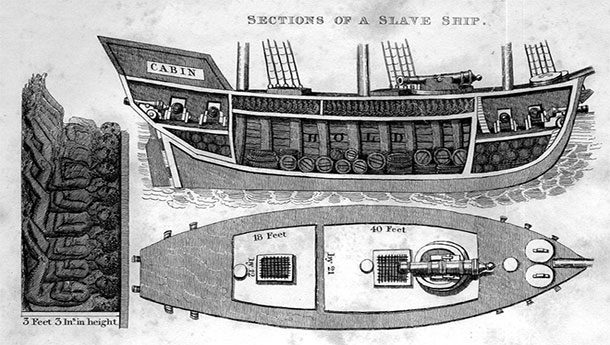 Source: nationalgeographic.com
Source: nationalgeographic.com Plantations in the American south (usually less than 100 slaves) were dwarfed in size compared to plantations in the Caribbean and South America (usually more than 100 slaves). This led to high rates of disease in the larger plantations of South America. Death rates in the Caribbean and Brazil were so high and birth rates were so low that slaves couldn't be replaced without a constant flow from Africa. In the US, slaves had a fertility rate that was nearly 80% higher.
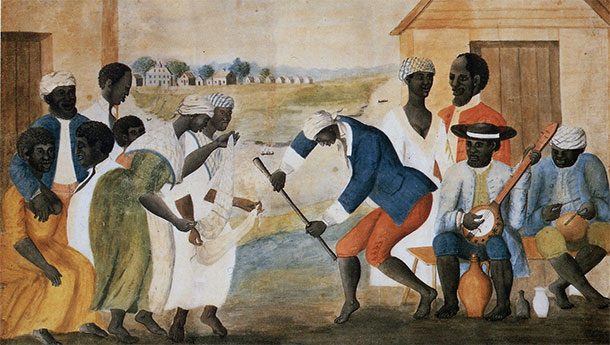 Source: aaihs.org
Source: aaihs.org By 1825, the high fertility rate among slaves in the US led to nearly one quarter of all black people in the New World living in the United States.
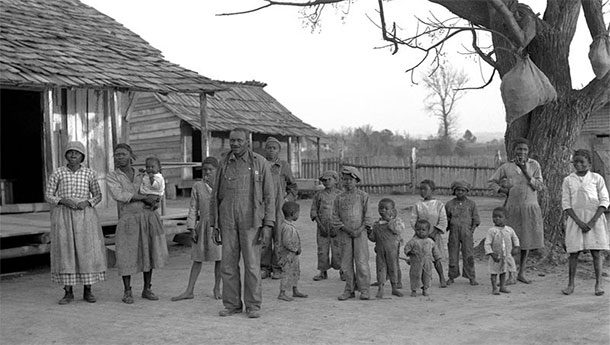 Source: salon.com
Source: salon.com This also meant that by the 1800's, most slaves in the US were much farther removed from their African roots than in the Caribbean and South America. While slaves in the US were third, fourth, and fifth generation Americans, most slaves in the Caribbean and South America had been born in Africa.
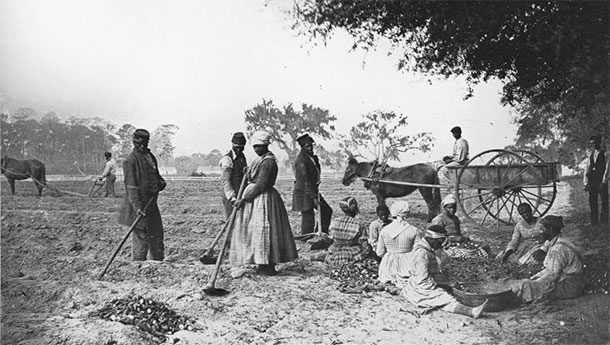 Source: aaihs.org
Source: aaihs.org Both British Parliament and US Congress outlawed the importation of slaves in 1807. While Britain pressured other countries to end their slave trades as well, the internal slave trade of the American South continued until the end of the Civil War in 1865. This finally abolished slavery within the United States.
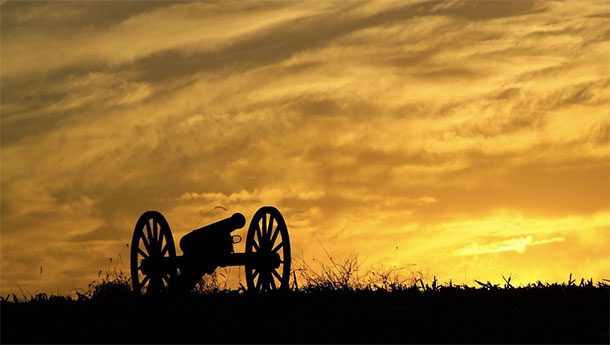 Source: nytimes.com
Source: nytimes.com Although American slaves were meant to be free, Jim Crow laws and segregation prevented Blacks from owning homes, being employed, and getting an education. It wasn't until November 2000 that Alabama finally became the last state to overturn its ban on interracial marriage. Although the US Supreme Court had prevented Alabama from enforcing its law, the ban remained on the books.
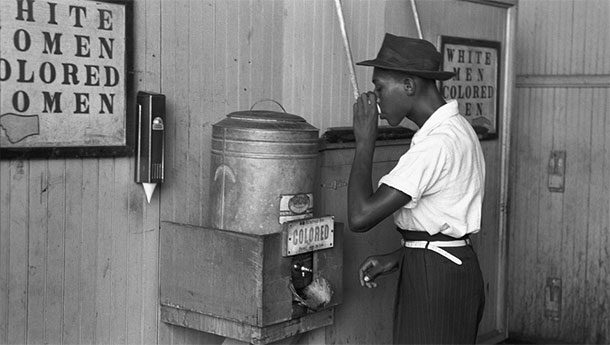 Source: britannica.com
Source: britannica.com Although every single government on Earth has "officially" banned slavery, it still remains a huge problem. There are actually more slaves in the world today than ever before. By some estimates up to 50 million people live in modern day bondage. Most of these slaves are in southern Asia (over 20 million), but the rest of Asia, Eastern Europe, Africa and the Middle East all have high levels of slavery as well.
 Source: washingtonpost.com
Source: washingtonpost.com Lists Going Viral Right Now
Featured Image: wikimedia commons (public domain), 25. wikimedia commons (public domain), 24. pixabay (public domain), 23. derivative work: Hakeem.gadi (talk) Traite_musulmane_medievale.svg: Aliesin, Medieval Arab Slave Trade, CC BY-SA 3.0, 22-19. wikimedia commons (public domain), 18. Tropenmuseum, part of the National Museum of World Cultures, Tropenmuseum Royal Tropical Institute Objectnumber 3444-7 Begrafenis bij plantageslaven2, CC BY-SA 3.0, 17. Sémhur, Triangular trade, CC BY-SA 3.0, 16. wikimedia commons (public domain), 15. howard_morland via flickr, CC BY 2.0, 14-13. wikimedia commons (public domain), 12. Dave Ley, Elmina slave castle, CC BY-SA 3.0, 11. Jbolden030170, African slave ship diagram, CC BY-SA 3.0, 10-9. wikimedia commons (public domain), 8. pixabay (public domain), 7-4. wikimedia commons (public domain), 3-2. pixabay (public domain), 1. Kwamikagami. Font: Candara., Modern incidence of slavery, CC BY-SA 3.0



























